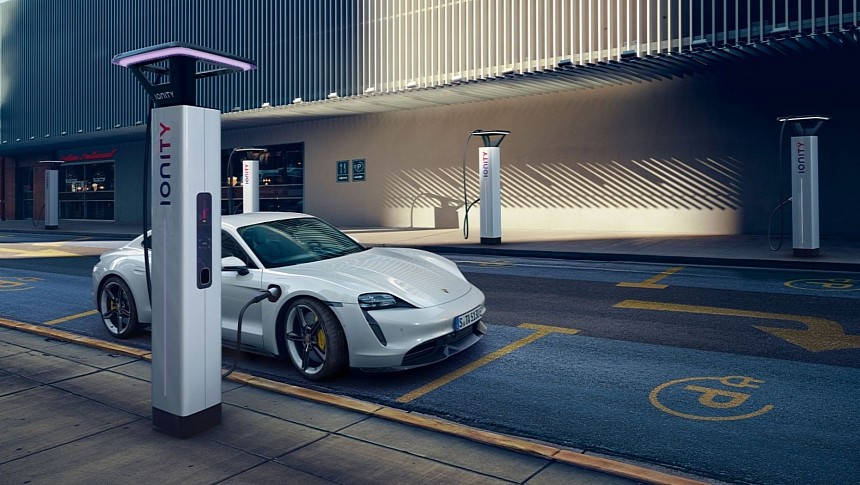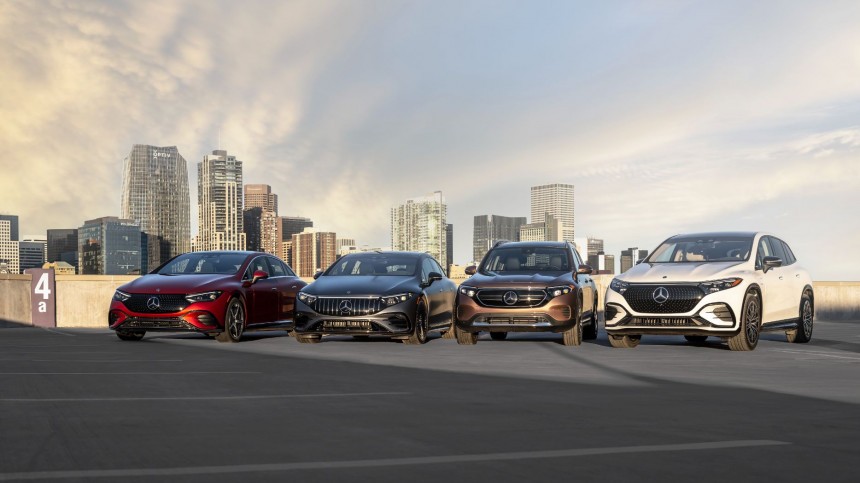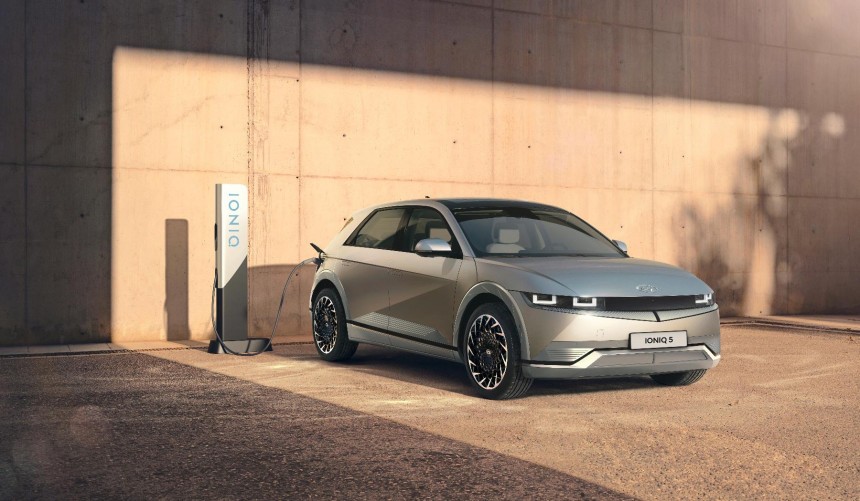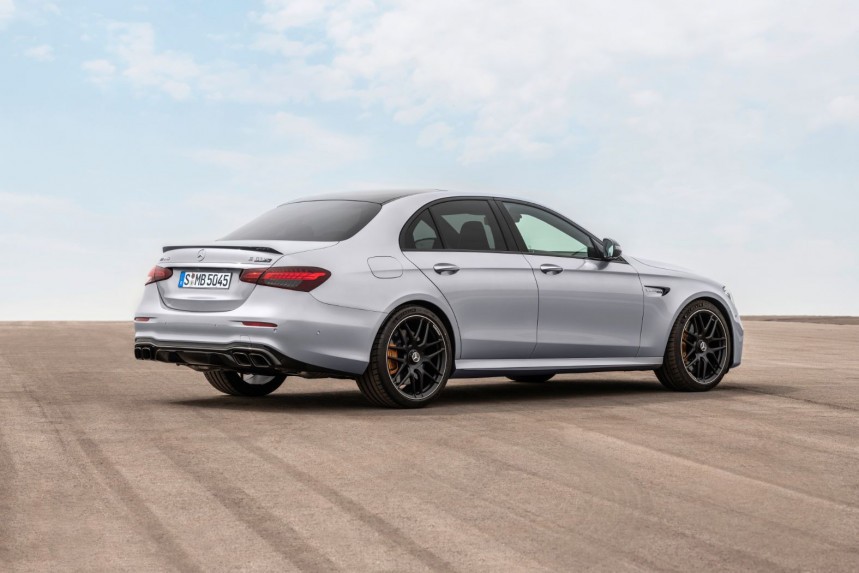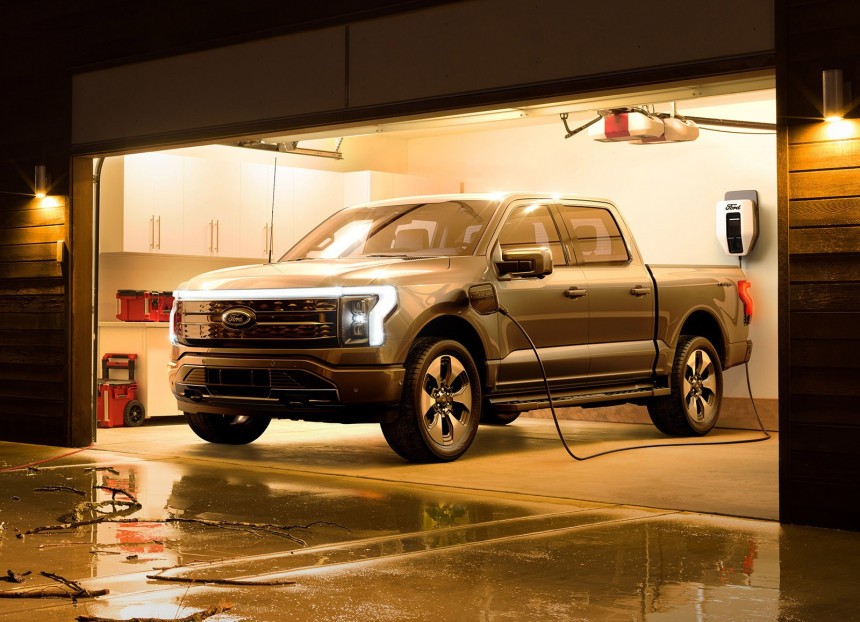The automotive industry has been electrified, quite literally, by the rise of electric vehicles. Over the past decade, these sleek and silent machines have zoomed onto the scene, promising a future of zero emissions and sustainable mobility.
Yet, beneath the gleaming surface lies a growing debate about the trajectory of EVs, their residual values, and whispers of a surprising twist - the potential resurgence of Internal Combustion Engine (ICE) vehicles.
As the EV landscape evolves, it's time to examine whether EVs have peaked and whether carmakers are reconsidering their electrified aspirations.
EVs burst onto the automotive scene like a lightning bolt, capturing headlines and the hearts of environmentally conscious consumers. With remarkable acceleration, whisper-quiet operation, and an unparalleled promise of reducing carbon footprints, the EV movement seemed unstoppable.
However, the landscape shifted as EVs proliferated and competitors flooded the market. Some critics argue that the initial excitement has waned, leading to a stagnation in innovation and design. The question now looms: have EVs reached their zenith?
Carmakers have been rapidly ramping up their production of electric vehicles, introducing a stream of new models and outlining plans to phase out gas-powered cars within the next five to 10 years.
This might lead to the perception that EVs are flying off dealership lots, with buyers eagerly embracing the latest offerings from every automotive brand. However, recent findings from a survey conducted by Cox Automotive paint a different picture, indicating that the current supply of electric vehicles is actually outpacing consumer demand.
Research highlights a significant shift in the EV market dynamics. For example, during the second quarter of 2023, electric vehicles in the United States spent an average of 92 days at dealerships before finding buyers. This contrasts starkly with the same period in 2022 when EVs were typically sold within an average of 36 days. Interestingly, this trend has persisted despite the notable price reduction across the electric vehicle spectrum.
These shifting numbers have given rise to speculation among some analysts that electric vehicles may have reached a critical inflection point. While the enthusiasm for EVs remains palpable, this new data emphasizes a growing disconnect between supply and consumer appetite. The longer duration electric vehicles stay on dealer lots could signify a transition, prompting questions about the sustainability of the current production rates and actual market demand.
This shift in dynamics raises essential considerations for carmakers and industry stakeholders. While the push for electric mobility is undeniable, and the advancements in EV technology are remarkable, the EV market may be entering a phase where a more cautious and strategic approach is necessary. This development underscores the significance of accurately gauging consumer preferences and understanding the evolving landscape of electric vehicle adoption.
As automakers navigate these shifting currents, the broader implications for the industry and the future trajectory of electric vehicles remain uncertain. Will this trend prompt automakers to reconsider their production strategies, pivot towards more targeted marketing, or invest further in consumer education?
Only time will reveal whether this supply-demand disparity is a momentary hiccup or a more substantial reflection of the complex interplay between technology, consumer behavior, and market dynamics in the electric vehicle landscape.
Residual values, a critical measure of a vehicle's worth over time, have emerged as a surprising puzzle in the current world of EVs. While traditional ICE-powered cars often experience a steep decline in value, EVs generally exhibit poor residual values.
According to findings from automotive research firm iSeeCars.com, the prices of used electric vehicles are experiencing a swift decline, surpassing the rate of depreciation observed in the broader used car market.
The firm analyzed data from a substantial pool of 1.8 million one- to five-year-old used vehicles sold between June 2022 and 2023. This comprehensive analysis unveiled a remarkable revelation: used EV prices have plummeted by nearly 30% compared to the same period in the previous year.
This counterintuitive trend raises concerns about the long-term economic viability of EV ownership. As enthusiasts ponder the allure of EVs, the nagging question remains: are EVs indeed a sound investment, or is their low residual value a warning signal of a broader trend?
Amidst the ups and downs of the EV revolution, whispers of a surprising shift have begun to circulate within the industry. Rumors suggest that some automakers quietly explore the possibility of resurrecting some of their ICE-powered vehicles.
While this may raise eyebrows, it reflects a complex reality: the ICE engine possesses decades of refinement, and a visceral connection with enthusiasts that some argue is missing in EVs. As carmakers contemplate the allure of a familiar roar over the whisper of electrons, the resurgence of ICE vehicles could mark an intriguing turn of events.
The debate rages on about the trajectory of EVs and the potential revival of ICE vehicles, but the future may hold a more nuanced picture. Rather than an either-or scenario, the industry could embrace a harmonious coexistence of both propulsion technologies.
In some areas of the United States, purchasers of electric vehicles are still categorized as early adopters, and the prospect of a fully electric automotive landscape seems distant. Within the heartland of America and most of Europe, the availability of EV charging stations remains sparse, causing drivers to retain their ICE-powered vehicles for extended periods. Conversely, urban residents are more prone to exploring novel technologies and evaluating various options.
Many modern electric vehicles boast an average range of around 500 km (311 miles, with models like the Mercedes-Benz EQS surpassing this with an impressive estimated WLTP range of 720 km (447 miles).
Yet, the persistent specter of range anxiety continues to cast its shadow over drivers. Automakers are diligently addressing this concern through innovative solutions like solid-state batteries and the expansion of fast-charging infrastructure across various locations to mitigate apprehensions.
Toyota's recent plan to develop an EV that could run 1500 km (932 miles) on a single charge could persuade consumers to hold off on their purchase in anticipation of the next generation of EV advancements.
Electric vehicles continue to push the envelope of sustainability and innovation, while ICE vehicles offer a nostalgic charm and a bridge for those hesitant to make the leap to electrification. It's a delicate balancing act between past and future, tradition and innovation.
Tesla is extending access to its widely acclaimed Supercharger network to owners of electric vehicles produced by other carmakers in the U.S. This network, comprising an impressive 12,000 Superchargers, accounts for approximately 60% of the overall fast-charging infrastructure accessible to EV drivers in the United States.
The promotion of EV adoption is a central focus. In the U.S, the Inflation Reduction Act underscores this endeavor by offering incentives to automotive companies that have established manufacturing facilities within the United States. Tax credits are attainable for individuals purchasing EVs from renowned manufacturers such as Tesla, Ford, and other key industry players.
Globally, electric vehicle sales attained a commendable 10% market share in 2022, a notable increase from the preceding year's 8.3%. While this growth is indicative of progress, it remains a gradual ascent.
The pace of this transition is even more measured in the United States, where approximately seven percent of vehicle sales constitute all-electric models. However, it's important to note that EVs collectively represent a substantial $70 billion market in the United States this year.
Despite these advancements, challenges persist on the path toward a shared objective embraced by many worldwide: a complete cessation of internal-combustion vehicle sales by 2035. This ambitious target has garnered support from entities like the European Union and a coalition of American states spearheaded by California.
For consumers, a series of hurdles still need to be overcome. Widespread public confusion about the workings of EVs remains, compounded by the relatively high cost of electric cars, albeit prices are progressively declining.
Although improving, the existing infrastructure for public charging is only partially seamless. Battery-related issues are another focal point, with concerns about raw material mining and the sustainable recycling of batteries at the end of their life cycle being at an all-time high.
As the automotive world navigates the twists and turns of EVs, one thing remains clear: the electrified road ahead is far from linear. Peaks and valleys may define the journey, but these undulations are a testament to the industry's adaptability and willingness to embrace change.
Whether EVs have peaked or are poised for a second surge is a topic ripe for discussion. However, what's undeniable is that the automotive landscape, much like the electric motor itself, is charged with potential and possibility.
As the EV landscape evolves, it's time to examine whether EVs have peaked and whether carmakers are reconsidering their electrified aspirations.
Peaks and Valleys: Have EVs Reached Their Pinnacle?
However, the landscape shifted as EVs proliferated and competitors flooded the market. Some critics argue that the initial excitement has waned, leading to a stagnation in innovation and design. The question now looms: have EVs reached their zenith?
Carmakers have been rapidly ramping up their production of electric vehicles, introducing a stream of new models and outlining plans to phase out gas-powered cars within the next five to 10 years.
This might lead to the perception that EVs are flying off dealership lots, with buyers eagerly embracing the latest offerings from every automotive brand. However, recent findings from a survey conducted by Cox Automotive paint a different picture, indicating that the current supply of electric vehicles is actually outpacing consumer demand.
Research highlights a significant shift in the EV market dynamics. For example, during the second quarter of 2023, electric vehicles in the United States spent an average of 92 days at dealerships before finding buyers. This contrasts starkly with the same period in 2022 when EVs were typically sold within an average of 36 days. Interestingly, this trend has persisted despite the notable price reduction across the electric vehicle spectrum.
These shifting numbers have given rise to speculation among some analysts that electric vehicles may have reached a critical inflection point. While the enthusiasm for EVs remains palpable, this new data emphasizes a growing disconnect between supply and consumer appetite. The longer duration electric vehicles stay on dealer lots could signify a transition, prompting questions about the sustainability of the current production rates and actual market demand.
This shift in dynamics raises essential considerations for carmakers and industry stakeholders. While the push for electric mobility is undeniable, and the advancements in EV technology are remarkable, the EV market may be entering a phase where a more cautious and strategic approach is necessary. This development underscores the significance of accurately gauging consumer preferences and understanding the evolving landscape of electric vehicle adoption.
As automakers navigate these shifting currents, the broader implications for the industry and the future trajectory of electric vehicles remain uncertain. Will this trend prompt automakers to reconsider their production strategies, pivot towards more targeted marketing, or invest further in consumer education?
Only time will reveal whether this supply-demand disparity is a momentary hiccup or a more substantial reflection of the complex interplay between technology, consumer behavior, and market dynamics in the electric vehicle landscape.
Residual Values: The Shock of the Slow Depreciation
According to findings from automotive research firm iSeeCars.com, the prices of used electric vehicles are experiencing a swift decline, surpassing the rate of depreciation observed in the broader used car market.
The firm analyzed data from a substantial pool of 1.8 million one- to five-year-old used vehicles sold between June 2022 and 2023. This comprehensive analysis unveiled a remarkable revelation: used EV prices have plummeted by nearly 30% compared to the same period in the previous year.
This counterintuitive trend raises concerns about the long-term economic viability of EV ownership. As enthusiasts ponder the allure of EVs, the nagging question remains: are EVs indeed a sound investment, or is their low residual value a warning signal of a broader trend?
Reviving the Roar: The ICE Resurgence
While this may raise eyebrows, it reflects a complex reality: the ICE engine possesses decades of refinement, and a visceral connection with enthusiasts that some argue is missing in EVs. As carmakers contemplate the allure of a familiar roar over the whisper of electrons, the resurgence of ICE vehicles could mark an intriguing turn of events.
The debate rages on about the trajectory of EVs and the potential revival of ICE vehicles, but the future may hold a more nuanced picture. Rather than an either-or scenario, the industry could embrace a harmonious coexistence of both propulsion technologies.
In some areas of the United States, purchasers of electric vehicles are still categorized as early adopters, and the prospect of a fully electric automotive landscape seems distant. Within the heartland of America and most of Europe, the availability of EV charging stations remains sparse, causing drivers to retain their ICE-powered vehicles for extended periods. Conversely, urban residents are more prone to exploring novel technologies and evaluating various options.
Many modern electric vehicles boast an average range of around 500 km (311 miles, with models like the Mercedes-Benz EQS surpassing this with an impressive estimated WLTP range of 720 km (447 miles).
Yet, the persistent specter of range anxiety continues to cast its shadow over drivers. Automakers are diligently addressing this concern through innovative solutions like solid-state batteries and the expansion of fast-charging infrastructure across various locations to mitigate apprehensions.
Toyota's recent plan to develop an EV that could run 1500 km (932 miles) on a single charge could persuade consumers to hold off on their purchase in anticipation of the next generation of EV advancements.
Electric vehicles continue to push the envelope of sustainability and innovation, while ICE vehicles offer a nostalgic charm and a bridge for those hesitant to make the leap to electrification. It's a delicate balancing act between past and future, tradition and innovation.
Tesla is extending access to its widely acclaimed Supercharger network to owners of electric vehicles produced by other carmakers in the U.S. This network, comprising an impressive 12,000 Superchargers, accounts for approximately 60% of the overall fast-charging infrastructure accessible to EV drivers in the United States.
The promotion of EV adoption is a central focus. In the U.S, the Inflation Reduction Act underscores this endeavor by offering incentives to automotive companies that have established manufacturing facilities within the United States. Tax credits are attainable for individuals purchasing EVs from renowned manufacturers such as Tesla, Ford, and other key industry players.
Final Charge: Navigating the EV Landscape
The pace of this transition is even more measured in the United States, where approximately seven percent of vehicle sales constitute all-electric models. However, it's important to note that EVs collectively represent a substantial $70 billion market in the United States this year.
Despite these advancements, challenges persist on the path toward a shared objective embraced by many worldwide: a complete cessation of internal-combustion vehicle sales by 2035. This ambitious target has garnered support from entities like the European Union and a coalition of American states spearheaded by California.
For consumers, a series of hurdles still need to be overcome. Widespread public confusion about the workings of EVs remains, compounded by the relatively high cost of electric cars, albeit prices are progressively declining.
Although improving, the existing infrastructure for public charging is only partially seamless. Battery-related issues are another focal point, with concerns about raw material mining and the sustainable recycling of batteries at the end of their life cycle being at an all-time high.
As the automotive world navigates the twists and turns of EVs, one thing remains clear: the electrified road ahead is far from linear. Peaks and valleys may define the journey, but these undulations are a testament to the industry's adaptability and willingness to embrace change.
Whether EVs have peaked or are poised for a second surge is a topic ripe for discussion. However, what's undeniable is that the automotive landscape, much like the electric motor itself, is charged with potential and possibility.
